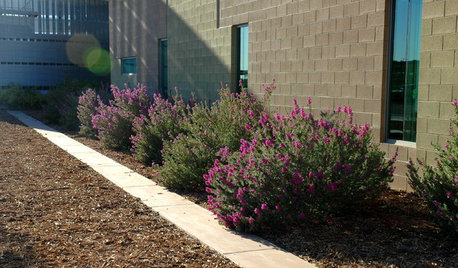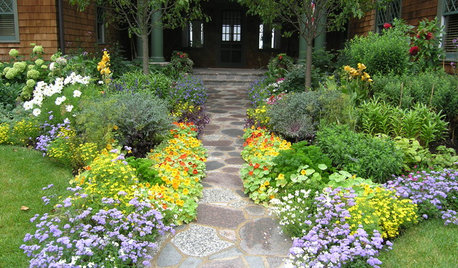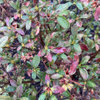Help id ing this shrub please
halley_rose
9 years ago
Related Stories

GARDENING GUIDESGreat Design Plant: Silphium Perfoliatum Pleases Wildlife
Cup plant provides structure, cover, food and water to help attract and sustain wildlife in the eastern North American garden
Full Story
GARDENING GUIDESHow to Prune Your Flowering Shrubs for the Best Blooms
Less is often more when it comes to properly pruning flowering shrubs. Here’s what to do and why
Full Story
GARDENING GUIDESHow to Avoid Overcrowded, Overpruned Shrubs
Go for a more natural look that’s easier and less expensive to maintain by giving your plants the right amount of growing room
Full Story
TREESHow to Buy Healthy Trees and Shrubs
A healthy young plant with a strong form is more likely to do well in your yard. Here’s what to look for at the nursery
Full Story
GARDENING GUIDESPathway Plantings That Please the Senses
Add some color, life and intrigue beside your sidewalk with these 7 suggestions
Full Story
SELLING YOUR HOUSE10 Low-Cost Tweaks to Help Your Home Sell
Put these inexpensive but invaluable fixes on your to-do list before you put your home on the market
Full Story
STANDARD MEASUREMENTSThe Right Dimensions for Your Porch
Depth, width, proportion and detailing all contribute to the comfort and functionality of this transitional space
Full Story
PETS6 Ways to Help Your Dog and Landscape Play Nicely Together
Keep your prized plantings intact and your dog happy too, with this wisdom from an expert gardener and dog guardian
Full Story
GARDENING AND LANDSCAPINGBe a Citizen Scientist to Help Wildlife, Learn and Have Fun Too
Track butterflies, study birds, capture stars ... when you aid monitoring efforts, you’re lending Mother Nature a hand
Full StoryMore Discussions









ken_adrian Adrian MI cold Z5
Embothrium
Related Professionals
Arnold Landscape Architects & Landscape Designers · Montgomeryville Landscape Architects & Landscape Designers · Anderson Landscape Contractors · Columbine Landscape Contractors · East Patchogue Landscape Contractors · Galt Landscape Contractors · New Baltimore Landscape Contractors · Newnan Landscape Contractors · Antioch Landscape Contractors · San Pablo Landscape Contractors · Suitland Window Contractors · Grand Rapids Driveway Installation & Maintenance · Novi Decks, Patios & Outdoor Enclosures · Woodland Hills Decks, Patios & Outdoor Enclosures · Eustis Decks, Patios & Outdoor Enclosuresmikebotann
Embothrium
wisconsitom
Embothrium
wisconsitom
viburnumvalley
Embothrium
viburnumvalley
Embothrium